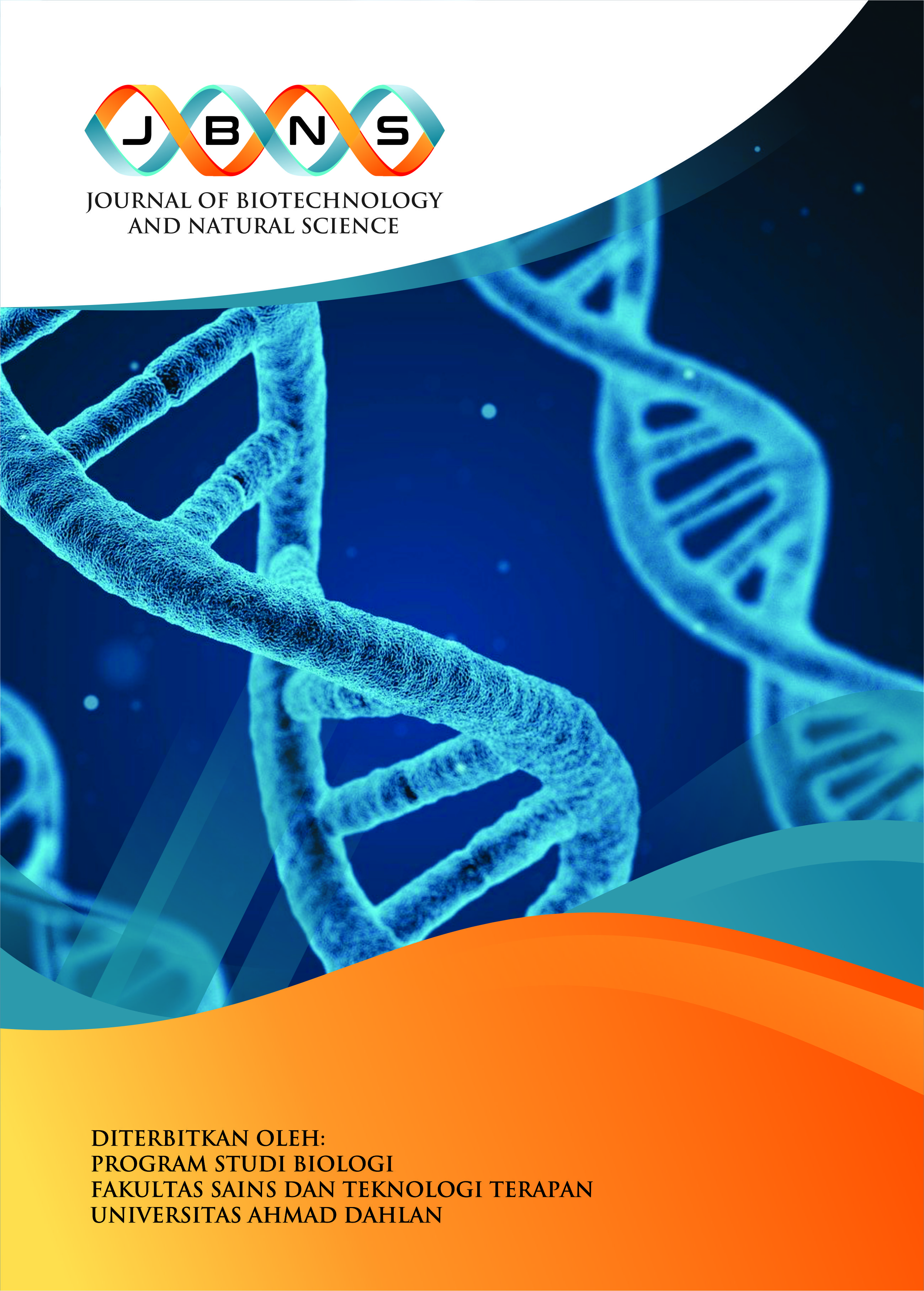Effect of An Additional Amount of Fish and Fermentation Time on The Sensory Properties of The Lemea
DOI:
https://doi.org/10.12928/jbns.v3i1.8261Keywords:
Bamboo, Fermentation, Lemea, Oreochromis mossambicus, Sensory evaluationAbstract
Lemea, a traditional fermented food of the Rejang people in Bengkulu, is made from young bamboo and fish. The fish commonly used in the making Lemea is Mozambique tilapia or Mujair (Oreochromis mossambicus). The fermentation process typically lasts between 3 to 7 days. This study aimed to assess the sensory characteristics, including taste, color, texture, and aroma, of Lemea, based on the preferences of panelists. The variations examined were fermentation duration, and the amount of Mujair fish added. The research followed a completely randomized design, incorporating three fermentation durations (24, 96, and 144 hours) and three fish quantities (250 grams, 500 grams, and 750 grams). Sensory evaluations were conducted on the fermented samples, encompassing taste, aroma, texture, and color. The data revealed that the most favored taste and texture of Lemea were achieved with 500 grams of fish and a fermentation duration of 144 hours (J2W3). Likewise, the preferred aroma and color were observed in the sample with 750 grams of fish and 24 hours of fermentation (J3W1). The data analysis indicated that the sample with 500 grams of fish and a fermentation duration of 144 hours (J2W3) exhibited the most favorable sensory characteristics (taste, aroma, texture, and color). Thus, the quantity of fish added and the duration of fermentation influenced the sensory attributes of Lemea.
References
Darna., Turnip, M., Rahmawati. 2018. Identifikasi Bakteri Anggota Enterobacteriaceae Pada Makanan Tradisional Sotong Pangkong. Jurnal Labora Medika 2 (2) : 6-12.
Didah Nur Faridah, Nestri Purnamasari, & Sri Laksmi Suryaatmaja. (2019). Karakteristik Fisikokimia Tepung Daluga (Cyrtosperma merkusii. (Hassk.) Schott) Hasil Modifikasi Fermentasi Bakteri Asam Laktat dan Heat Moisture Treatment (HMT). 8(3), 94–94. https://doi.org/10.17728/jatp.4203
Jagadesswari S, Vidya P. 2010. Isolation and Characterization of Bacteriocin Producing Lactobacillus sp. From Traditional Fermented Food. Electronic Journal of Environmental Agricultural and Food Chemistry 9: 575-581
Jamioł-Milc, D., Biernawska, J., Liput, M., Stachowska, L., & Domiszewski, Z. (2021). Seafood Intake as a Method of Non-Communicable Diseases (NCD) Prevention in Adults. Nutrients, 13(5), 1422. https://doi.org/10.3390/nu13051422
Liyoni, D., Dewi, K., & Susanti, L. (2020). A study of changes in the quality of Lemea Block in various types of packaging materials during storage. IOP Conference Series: Earth And Environmental Science, 425(1), 012056. doi: 10.1088/1755-1315/425/1/012056
Mokoena, M. (2017). Lactic Acid Bacteria and Their Bacteriocins: Classification, Biosynthesis and Applications against Uropathogens: A Mini-Review. Molecules, 22(8), 1255. doi: 10.3390/molecules22081255
Nongdam, P., & Tikendra, L. (2014). The Nutritional Facts of Bamboo Shoots and Their Usage as Important Traditional Foods of Northeast India. International Scholarly Research Notices, 2014, 1-17. doi: 10.1155/2014/679073
Nuryani, Y., Susanti, L., & Dewi, K. (2012). Consumers Preferences Test of Sambal Lemea The Unique Food of Rejangnese and Changed Products in Various Storage Temperature. Jurnal Agroindustri, 2(2), 71-76. Retrieved from https://ejournal.unib.ac.id/agroindustri/article/view/3857
Okfrianti, Y., Darwis, D., & Pravita, A. (2018). Bakteri Asam Laktat Lactobacillus Plantarum C410LI dan Lactobacillus Rossiae LS6 yang Diisolasi dari Lemea Rejang terhadap Suhu, pH dan Garam Empedu Berpotensi sebagai Prebiotik. Jurnal Ilmu Dan Teknologi Kesehatan, 6(1), 49-58. doi: 10.32668/jitek.v6i1.108
Oktarianto, A., & Widawati, L. (2018). Karakteristik Mutu Sambal Lemea Dengan Variasi Waktu Fermentasi dan Jenis Ikan. AGRITEPA: Jurnal Ilmu Dan Teknologi Pertanian, 4(1), 133-145. Doi: 10.37676/agritepa.v4i1.593
Reddy, G., & van Dam, R. (2020). Food, culture, and identity in multicultural societies: Insights from Singapore. Appetite, 149, 104633. doi: 10.1016/j.appet.2020.104633
Sharma, R., Garg, P., Kumar, P., Bhatia, S., & Kulshrestha, S. (2020). Microbial Fermentation and Its Role in Quality Improvement of Fermented Foods. Fermentation, 6(4), 106. doi: 10.3390/fermentation6040106
Wang, Y., Wu, J., Lv, M., Shao, Z., Hungwe, M., & Wang, J. et al. (2021). Metabolism Characteristics of Lactic Acid Bacteria and the Expanding Applications in Food Industry. Frontiers In Bioengineering And Biotechnology, 9. doi: 10.3389/fbioe.2021.612285
Zapaśnik, A., Sokołowska, B., & Bryła, M. (2022). Role of Lactic Acid Bacteria in Food Preservation and Safety. Foods, 11(9), 1283. doi: 10.3390/foods11091283
Downloads
Published
Issue
Section
License
Copyright (c) 2023 Abdul Aziz, Oktira Roka Aji

This work is licensed under a Creative Commons Attribution-ShareAlike 4.0 International License.

